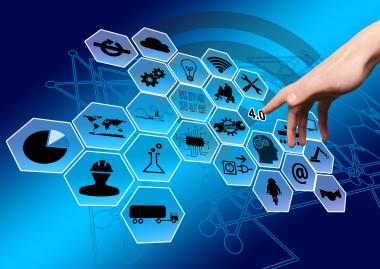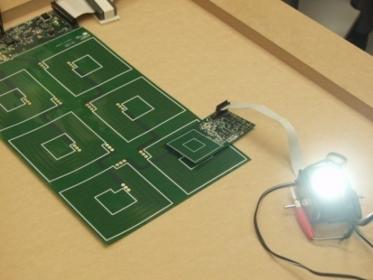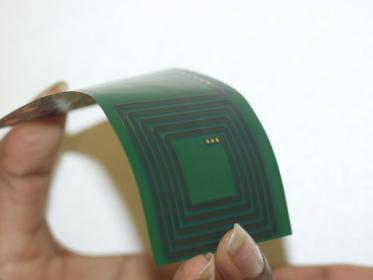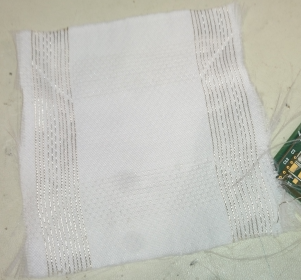The industrial future needs climate-neutral process heat
IN4climate.NRW publishes discussion paper
Not only private households, but above all industrial companies have a high demand for heat. On the way to climate neutrality, greater focus must be placed on the supply of process heat to the industry - especially in the industrial state of North Rhine-Westphalia (NRW). This is shown by the discussion paper of the climate protection think tank IN4climate.NRW.
In 2020, process heat accounted for a large percentage of industrial energy demand - 67 percent of the energy consumed by German industry - and is still predominantly supplied by fossil fuels (BMWi 2021a). That's almost 20 percent of Germany's total energy demand. No wonder: Whether glass, metal, cement or paper are melted, forged, fired or dried - all these processes require process heat. And in some cases up to a temperature of 3,000 °C.
In the discussion paper "Process heat for a climate-neutral industry (Prozesswärme für eine klimaneutrale Industrie)", IN4climate.NRW formulates approaches and recommendations for action for a process heat transition. A total of thirteen partners of the initiative have signed the paper.
Samir Khayat, Managing Director of NRW.Energy4-Climate: "The switch to sustainable process heat supply is one of the decisive factors in ensuring that the transformation of industry can succeed. With the IN4climate.NRW initiative, we are bringing together the expertise from science, politics as well as industry, and developing concrete strategies to put climate neutrality in industry into practice."
Various figures illustrate the need for action: Only 6 percent of the energy required for process heat has so far been covered by renewable energies. Electricity also currently accounts for only 8 percent - as an energy source, it is still far from emission-free in today's electricity mix, but must become so in the future through the switch to 100 percent renewables.
NRW alone needs 40 percent of the process heat required by the whole of Germany
Tania Begemann, Project Manager Industry and Production at NRW.Energy4Climate and author of the paper: "The sustainable conversion of process heat has always been an important and urgent topic at IN4climate.NRW, but it becomes even more explosive in times of a global energy crisis. It is estimated that NRW alone requires 40 percent of the process heat required by the whole of Germany. In order to remain economically strong and an industrial state in the long term, it is therefore of particular importance for NRW to become independent of fossil process heat sources in the near future. We would like to draw attention to this with this paper. At the same time, this enormous challenge also offers NRW the opportunity to become a pioneer."
How can this be accomplished? The discussion paper shows central approaches and recommendations for action:
- Increase efficiency: The development and use of high-temperature heat pumps should be specifically promoted within the framework of pilot plants and concepts. In addition, companies should be supported in the development and implementation of concepts that minimize process temperatures and use waste heat within the company.
- Promote renewable heat sources: Local, renewable energy sources such as deep geothermal energy and solar thermal energy can be an important component of climate-neutral process heat supply and at the same time reduce the reliance on energy imports. Where renewables can supply industrial heating needs, they should be used. These forms of energy should therefore be supported in a targeted manner through inquiries and tenders.
- Increase renewable electricity: The electrification of processes and applications is the prerequisite for the energy transition. Expanding renewable power generation along with a solid power grid, creating competitive prices for green power, and developing flexible systems are therefore key tasks.
- Promote storable alternative energy sources: To be able to generate process heat even when renewable energies are not available, industry needs large quantities of storable energy carriers. In particular, sustainable hydrogen must be available at competitive prices and the necessary conditions, such as a transport and storage infrastructure, must be created. In addition to hydrogen, biomass is a valuable and storable energy carrier and raw material at the same time. This limited resource must therefore be used in a targeted and efficient manner.
The climate-neutral generation of process heat is of great importance for the whole of Germany, but especially for the industrial state of North Rhine-Westphalia, and at the same time represents a major challenge. The heat transition in industry requires an overall systemic and supraregional view and strategy development. On the one hand, such strategies should take into account the interaction of different sectors. On the other hand, they should include all heat requirements - from buildings to industry. In this paper, decision-makers from politics, industry and society will find initial reference points and impulses for this important, common task.
The paper was developed by the IN4climate.NRW initiative under the umbrella of the NRW.Energy4Climate state organization. It is supported by the institutes Fraunhofer UMSICHT, RWTH Aachen (Chair of Technical Thermodynamics), the VDZ research institute as well as the Wuppertal Institute, the companies Amprion, Currenta, Deutsche Rohstofftechnik (German raw material technology - RHM Group), Georgsmarienhütte, Kabel Premium Pulp and Paper, Lhoist, Pilkington Germany (NSG Group) and Speira as well as the Federal Association of the German Glass Industry.
Fraunhofer UMSICHT Fraunhofer-Institute energy consumption renewable energy erneuerbare Energien Sustainability
Fraunhofer Institute for Environmental, Safety and Energy Technology UMSICHT






